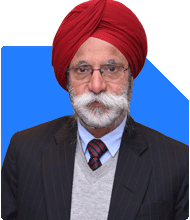Should I Diversify My Portfolio? A 32-Year-Old Investor Asks
Ramalingam Kalirajan |10219 Answers |Ask -Follow
Mutual Funds, Financial Planning Expert - Answered on Jul 25, 2024
He has an MBA in finance from the University of Madras and is a certified financial planner.
He is the director and chief financial planner at Holistic Investment, a Chennai-based firm that offers financial planning and wealth management advice.... more

Im 32 year old working with a companty. I ve started two sips ( 5000 each from May 2024) both in Small Cap ( Nippon Small Cap and Tata Ethical Fund . Is this correct way to do inveor i need diversification.
You are 32 years old and working with a company. You have started two SIPs of Rs. 5,000 each, both in small cap funds: Nippon Small Cap and Tata Ethical Fund, since May 2024. It's great that you have taken the initiative to invest regularly through SIPs.
Need for Diversification
Investing in small cap funds can offer high returns but also comes with higher risk. It's important to diversify your investments to reduce risk and achieve more balanced growth. Here's why and how you can diversify:
1. Diversification Benefits
Risk Reduction: Diversification helps spread risk across different asset classes.
Balanced Growth: Different types of funds perform well at different times. Diversification ensures you benefit from various market conditions.
Stability: A diversified portfolio provides more stability and consistent returns over the long term.
2. Suggested Diversification Strategy
To achieve diversification, consider adding funds from different categories:
Large Cap Funds
Why: Large cap funds invest in well-established companies. They offer more stability and lower risk compared to small cap funds.
Suggested Allocation: Allocate around 30-40% of your monthly investment to large cap funds.
Mid Cap Funds
Why: Mid cap funds invest in medium-sized companies. They provide a balance between the high growth potential of small caps and the stability of large caps.
Suggested Allocation: Allocate around 20-30% of your monthly investment to mid cap funds.
Multi Cap or Flexi Cap Funds
Why: These funds invest across large, mid, and small cap stocks, providing diversification within the equity segment.
Suggested Allocation: Allocate around 20-30% of your monthly investment to multi cap or flexi cap funds.
Debt Funds
Why: Debt funds offer stability and regular income. They reduce the overall risk of your portfolio.
Suggested Allocation: Allocate around 10-20% of your monthly investment to debt funds.
3. Reviewing Your Portfolio
Regularly review and rebalance your portfolio to ensure it aligns with your financial goals and market conditions. Consulting a Certified Financial Planner (CFP) can help you optimize your investment strategy.
Final Insights
Your current investment in small cap funds shows a willingness to take on higher risk for potential high returns. However, it's important to diversify your portfolio to achieve balanced growth and reduce risk. Add large cap, mid cap, multi cap, and debt funds to your investment mix. This will provide stability and help you achieve your financial goals more effectively.
Best Regards,
K. Ramalingam, MBA, CFP
Chief Financial Planner,
www.holisticinvestment.in
You may like to see similar questions and answers below
Ramalingam Kalirajan |10219 Answers |Ask -Follow
Mutual Funds, Financial Planning Expert - Answered on May 17, 2024
Ramalingam Kalirajan |10219 Answers |Ask -Follow
Mutual Funds, Financial Planning Expert - Answered on May 14, 2024
Ramalingam Kalirajan |10219 Answers |Ask -Follow
Mutual Funds, Financial Planning Expert - Answered on Jun 16, 2024
Nayagam P P |10169 Answers |Ask -Follow
Career Counsellor - Answered on Aug 11, 2025
Dr Nagarajan J S K |2257 Answers |Ask -Follow
NEET, Medical, Pharmacy Careers - Answered on Aug 11, 2025
T S Khurana |502 Answers |Ask -Follow
Tax Expert - Answered on Aug 11, 2025
T S Khurana |502 Answers |Ask -Follow
Tax Expert - Answered on Aug 11, 2025
Nayagam P P |10169 Answers |Ask -Follow
Career Counsellor - Answered on Aug 11, 2025
Radheshyam Zanwar |6277 Answers |Ask -Follow
MHT-CET, IIT-JEE, NEET-UG Expert - Answered on Aug 11, 2025
Nayagam P P |10169 Answers |Ask -Follow
Career Counsellor - Answered on Aug 11, 2025
Nayagam P P |10169 Answers |Ask -Follow
Career Counsellor - Answered on Aug 11, 2025
Nayagam P P |10169 Answers |Ask -Follow
Career Counsellor - Answered on Aug 11, 2025
Nayagam P P |10169 Answers |Ask -Follow
Career Counsellor - Answered on Aug 11, 2025


















